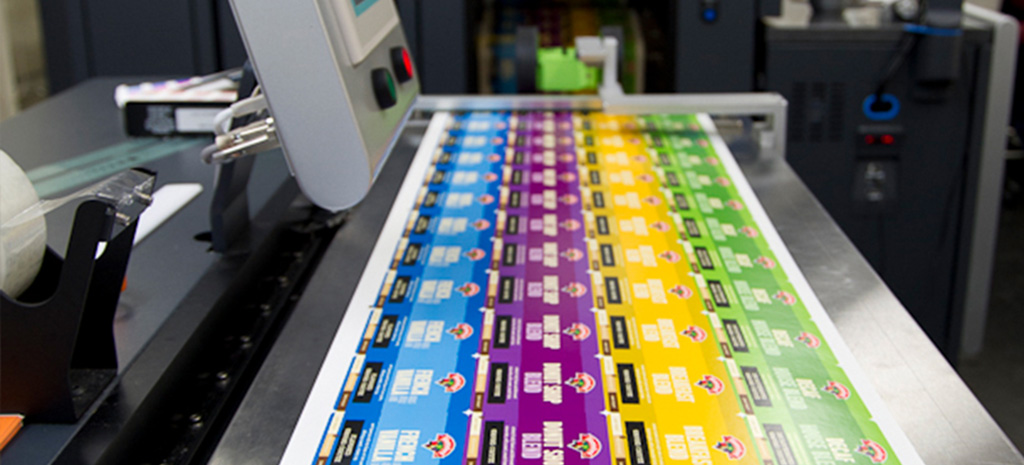The safety of food and beverage products is paramount to consumers, regulators, and manufacturers alike. And bottle label printing is a crucial player in providing essential safety to products. It is achieved through various means, from providing mandatory information to tracking details.
Here are 9 best practices for enhancing food and beverage safety through effective label design and tracking mechanisms.
Table of Contents
1. Comprehensive Product Information
A well-designed bottle label should include comprehensive product information that leaves no room for ambiguity. Vital details such as the product name, ingredients, nutritional information, net weight, and serving size must be visible and easily read. Manufacturers should also provide allergen warnings and advisories for sensitive consumers to avoid potential health risks.
Including clear storage instructions and expiration dates is essential to inform consumers about the product’s proper handling and shelf life. Transparent labelling ensures that customers can make informed decisions and reduces the likelihood of mishandling or consuming expired products.
2. Standardised Labeling
Standardisation is critical in the food and beverage industry to promote consistency and ease of understanding for consumers. Adhering to recognised labelling standards ensures labels are universally understood and compliant.
Standardisation also aids in traceability, which is vital during recalls or investigations into potential foodborne illnesses. With standardised information, manufacturers can quickly identify and remove affected batches from the market, reducing health risks and maintaining consumer trust.
3. QR Codes and Barcodes for Enhanced Tracking
Incorporating Quick Response (QR) codes and barcodes on bottle labels provides an efficient tracking mechanism throughout the supply chain. These codes contain essential product details, batch numbers, manufacturing dates, and other relevant information that can be scanned and tracked at each stage of production, distribution, and retail.
In the event of a product recall or contamination, QR codes and barcodes enable swift identification and isolation of affected products, minimising the impact on public health and the manufacturer’s reputation.
4. Tamper-Proof Packaging and Seals
Tamper-proof packaging is a non-negotiable aspect of food and beverage safety. Seal integrity is a visible assurance of the product’s safety, and consumers expect unbroken seals when purchasing items. Tamper-evident packaging helps detect potential breaches and signals that the product may have been compromised.
Manufacturers should invest in high-quality tamper-proof materials and ensure that seals are prominently displayed on the bottle labels. It ensures product safety and enhances consumer confidence in the brand.
5. Multi-lingual Labeling
Global food and beverage markets often cater to diverse consumer bases with varying language preferences. Multi-lingual labelling is essential to ensure that essential product information reaches all consumers. Labels should include translations of key information into major languages spoken in the target market, accommodating a broader audience and avoiding misunderstandings.
6. Anti-Counterfeiting Measures
Food and beverage products are vulnerable to counterfeiting, posing significant safety risks and financial losses for consumers and manufacturers. Integrating anti-counterfeiting measures on bottle labels, such as holographic elements or unique identification codes, helps distinguish genuine products from counterfeit ones.
These measures safeguard consumer health and protect brand reputation and revenue by preventing the circulation of fake or substandard goods.
7. Batch Tracing and Recall Readiness
Manufacturers must maintain detailed records of each production batch for efficient tracing and recall, if necessary. Assigning unique identifiers to batches and logging essential data allows for quick retrieval of specific information in emergencies.
Batch tracing is particularly important when dealing with perishable or time-sensitive products. Manufacturers can promptly identify and rectify any issues, thereby preventing widespread contamination and minimising potential harm.
8. Implementing Smart Labeling Technologies
Incorporating smart labelling technologies is a cutting-edge best practice that can revolutionise food and beverage safety. These technologies include Radio Frequency Identification (RFID) and Near Field Communication (NFC) tags embedded within bottle labels. Smart labels enable real-time tracking and monitoring of product movements throughout the supply chain.
RFID and NFC tags store unique identification data for each bottle, facilitating seamless traceability and transparency. As the bottles pass through various checkpoints, the information is automatically recorded in a centralised database accessible to all stakeholders. This ensures accurate and up-to-date product information, expediting recalls and identifying potential safety concerns faster than ever before.
Moreover, smart labels can help combat counterfeiting by allowing consumers to verify the product’s authenticity using their smartphones or other NFC-enabled devices. By scanning the label, consumers can access detailed product information and confirm its legitimacy, promoting consumer confidence in the brand.
9. Providing Clear Handling and Disposal Instructions
While bottle label printing focuses majorly on crucial product information, they should also include clear handling and disposal instructions to ensure consumer safety after product consumption. Clear instructions regarding proper storage conditions, refrigeration needs, and temperature limits help consumers maintain the product’s quality and prevent potential health risks due to mishandling.
In addition, environmentally-conscious consumers appreciate clear recycling instructions on bottle labels. As recycling regulations and practices vary across regions, specifying proper disposal methods and recycling symbols can aid consumers in making environmentally responsible choices.
Conclusion
Ensuring food and beverage safety through effective bottle label design and tracking practices is a legal obligation and a moral responsibility for manufacturers. Comprehensive product information, standardised labelling, QR codes and barcodes, tamper-proof packaging, multi-lingual labelling, anti-counterfeiting measures, and batch tracing are all integral components of a robust safety strategy.
DAL is one of the best places for all labelling needs in Australia. Do check out their website and book a call with their representative for more information about their services, from alcohol labels and beyond.



